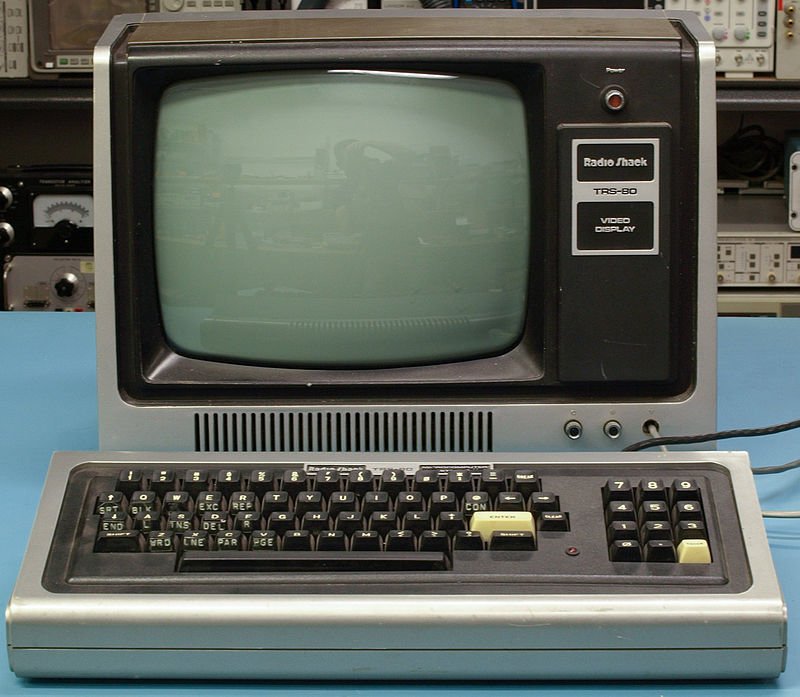
Jim Glanville
On their way home from school recently, a couple of neighborhood middle schoolers briefly stopped by to visit with this columnist and his wife.
One of them needed to borrow a house key that we keep for emergencies.
We sat around the kitchen table and not surprisingly talked about history. In answer to a question, one of them reached into her bag, pulled out a small computer, logged on to the Internet thanks to her friend’s home network and password, and rapidly found the answer.
The same week of their visit, the “Wall Street Journal” published a long article titled “Radio Shack Readies Plan for Survival.” The article reported that fewer than 100 Radio Shack brick-and-mortar stores remain, and the second company bankruptcy period is drawing to an end.
The Radio Shack store on Country Club Drive in Blacksburg closed in 2015 and stands unoccupied.
The middle schoolers and the “Journal” article got me thinking about the history of computers and reflecting on the amazing changes I have lived through since the first computers intended for personal use at home began to be mass marketed 40 years ago.
My first home computer was a Radio Shack TRS-80 Model I. The “Journal” article published a picture of Model I on display at a Boston computer show in 1977. The accompanying picture here shows a Radio Shack TRS-80 Model I courtesy of Wikipedia Commons.
In 1977, the arrival of the trio of the TRS-80 Model I, Commodore PET and Apple II began the home computer era. Primitive and limited at their inception, all of these machines improved rapidly, especially with hobbyists and aficionados contributing mightily to the development of software.
Big companies had been purchasing large computer systems for a decade or more, but in 1977 these big systems were far out of the consumer’s price range.
Tasks favored by early home computers users included playing games, word processing and communicating with other computers and bulletin boards via a telephone interface. In an infant version of the Internet, a home computer user could plug the earpiece and mouthpiece of a standard telephone into a “telephone interface,” which was a modem with two big rubber holes that could exchange information with a remote computer via a series of squeals.
Small businesses quickly adopted personal computers for tasks such as word processing, storing mailing lists, and bookkeeping. Lawyers offices were quick to adopt computers for preparing legal documents, many of which used standard text customized with the names of individual clients added in by the computer.
I bought my first TRS-80 in 1980 and a daisy wheel printer with a Radio Shack Scripsit word processor in 1981. Soon followed disk drives (using 5½-inch floppies) and many independently written disk operating systems (DOSs).
My favorite DOS was Ultrados, subsequently updated, expanded, and renamed Multidos. A little later came a superb, independently written word processor called Lazywriter. With some upgrades, and TRS-80 Models III and IV, that setup served my needs well into the era of the IBM-PC.
There is an interesting and detailed autobiographical book about the Radio Shack period of home computers and DOSs written by the Lazywriter team of Theresa and David Welsh. It is titled “Priming the Pump: How TRS-80 Enthusiasts Helped Spark the PC Revolution” (Ferndale, Michigan, Seeker Books, 2007).
These days, one of my home computers is a custom-built desktop machine running the venerable Windows 98 operating system. Its principal function is as a typewriter with modern word processing capability and vast amounts of storage. Its special value is that it is never connected to the Internet, which means that it is 100 percent secure, and nobody but me ever changes anything about it.
Another of my home computers is a Windows 7 laptop. It principally reads my email, connects me to the Internet and suffers from all the dangers to which an online computer is exposed. Some program or other on this laptop machine is always getting updated. Much of the time these updates are transparent to me; some of the time they make things work differently. Updates that seemingly make changes just for the sake of change are invariably irritating. Why is Java forever asking to be updated?
The next time they visit I will ask the middle schoolers if they ever saw a typewriter, probably not.
Jim Glanville is a retired chemist living in Blacksburg. He has been publishing and lecturing for more than a decade about the history of Southwest Virginia.

